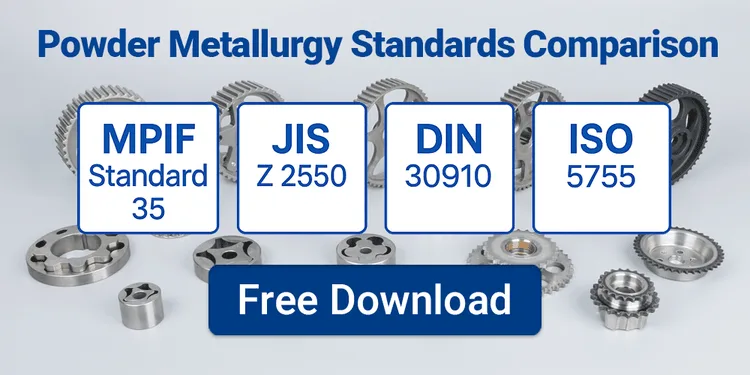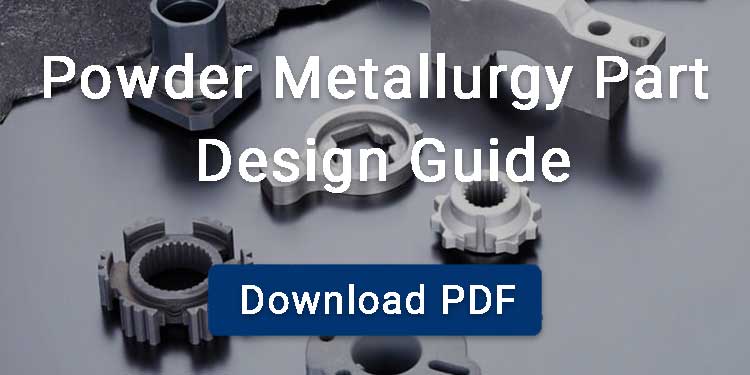Directing engine gases safely out of the vehicle while minimizing noise and harmful emissions is the responsibility of the exhaust system. Therefore, any breakdown will result in a poor performance, loud engine noise, and potential air pollution. In this article, we’ll dive into what an exhaust flange is, its function in exhaust systems, the different types, materials used in manufacturing, installation steps, maintenance tips, and more.
What is an Exhaust Flange?
An exhaust flange is a device used to connect different sections of an exhaust system, like attaching an exhaust pipe to a manifold or to another exhaust pipe. The function of an exhaust flange is to prevent leakage from the exhaust into the vehicle or surroundings when tightened. It simplifies removing, replacing, or upgrading parts of the exhaust without the need to cut or weld new sections.
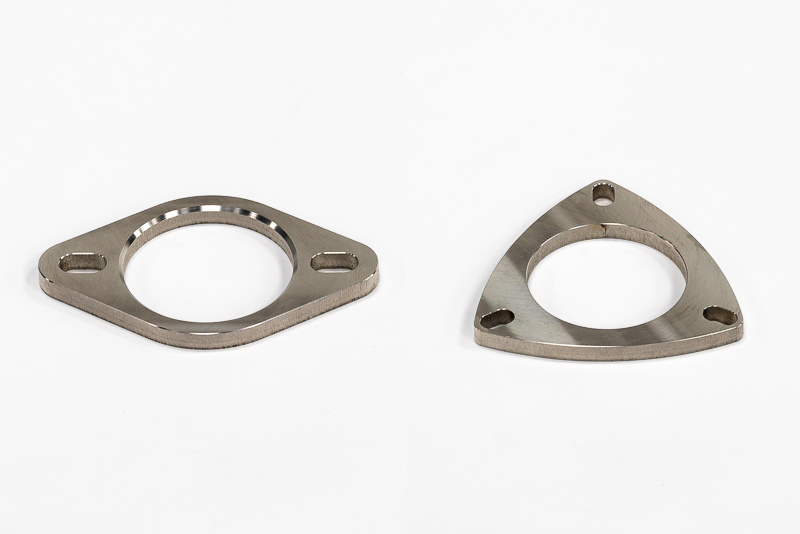
Exhaust Flanges: Purpose and Importance
Exhaust flanges are crucial in exhaust systems for many reasons:
Structural Support
They help in aligning and holding different exhaust parts in place, reducing the stress from vibrations or movement of the engine.
Leak Prevention
Flanges ensure proper sealing which prevents the escape of harmful exhaust gases, such as carbon monoxide, into the vehicle or the environment.
Noise Reduction
When gases escape, they produce some hissing or popping sounds that are quite noisy. Flanges ensure a tight seal in order to limit or eliminate the excess noise.
Easier Installation and Maintenance
Installation is made easy thanks to the modular connection of the exhaust components with the use of flanges. This also allows mechanics to quickly replace specific parts without dismantling the entire system.
Performance and Safety
Flanges ensure consistent exhaust flow, and this helps improve engine efficiency in high-performance vehicles. Additionally, this ensures compliance with emission standards.
Types of Exhaust Flanges
There are several types of exhaust flanges available in different sizes and face types, depending on vehicle type, performance needs, or structural preferences. The face types include flat face (FF), raised face (RF), or ring type joint (RTJ):
Socket Weld Flange
This has a socket where the flange is inserted and secured by a one fillet weld.
- Socket weld flanges have a fillet weld and can be reliable when installed correctly, though they’re less common in automotive exhaust systems.
- Ideal for low- to moderate-pressure applications.
- They have a simple design and are better for pipes with a small size.
Threaded Flange
Also called a screw flange and it uses a screw thread to connect a pipe to the flange through a male and female thread.
- Feature a clamping ring and male-female mating ends.
- Ideally used in non-toxic, low-pressure, and low-temperature systems, because the thread geometry could distort when exposed to high temperature or pressure. This will lead to a leakage.
Slip-On Flange
These are also known as hubbed flanges; they slide over the end of the exhaust pipe and are then welded in place by one or two fillet welds.
- Commonly used for large-diameter exhaust piping.
- Some advantages of the slip-on flange include low cost, no welding preparation needed, no need to accurately cut the pipe, and less skill required for welding.
- They provide a snug fit and are useful in custom fabrication projects.
Lap Joint Flange
- This flange is a combination of two elements: a stub end and a lap joint ring flange. Normally used with slip-fit pipes and commonly seen in custom exhaust builds.
- Lap joint flanges are used with slip-fit pipes. The flange itself isn’t welded, allowing it to rotate freely for easier alignment.
- Provide flexibility and ease of alignment in systems prone to thermal expansion.
Blind Flange
- This is also known as a closure plate flange because it is usually fixed at the end of the piping system to terminate the pipe. This means there is no center hole and no place for the pipe to flow through.
- It has a simple design but is expensive.
- It can be drilled and used as a slip-on flange or tapped to be used as a threaded flange.
Weld Neck Flange
- They are known for their long necks that are welded to the exhaust pipe, and are useful in resisting bowing and dishing.
- Designed for high-strength, high-pressure, and high-temperature applications.
- Common in heavy-duty vehicles and industrial exhaust systems.
Comparison Table
| Flange Type | ASME Class | Faces | Joint Integrity | Weld |
|---|---|---|---|---|
| Socket Weld Flange | ≤ 600 | FF, RF | Medium | One fillet weld |
| Threaded Flange | ≤ 300 | FF, RF | Low | None |
| Slip-on Flange | ≤ 600 | FF, RF | Medium | One or two fillet welds |
| Lap Joint Flange (stub end) | 150 to 2500 | FF, RF, RTJ | High | One butt weld |
| Blind Flange | All | All | NA | None |
| Weld Neck Flange | All | All | High | One butt weld |
Materials Used for Exhaust Flanges
The materials used for exhaust flanges are chosen with consideration for certain conditions like extreme temperatures, corrosion, and vibration. That’s why material selection is critical. Here are the most common materials:
Stainless Steel
The most durable and corrosion-resistant option.
Ideal for performance vehicles and marine applications.
Mild Steel
It is budget-friendly and easy to fabricate.
It requires a protective coating or painting to prevent rust.
Aluminized Steel
It is coated with aluminum-silicon alloy for enhanced corrosion protection.
Usually found in many OEM exhaust systems.
Cast Iron
It is rare in modern vehicles, but used in older or heavy-duty setups.
It is very strong but heavier and less corrosion-resistant.
These materials are selected based on application demands because they offer varying degrees of temperature resistance, weldability, and longevity.
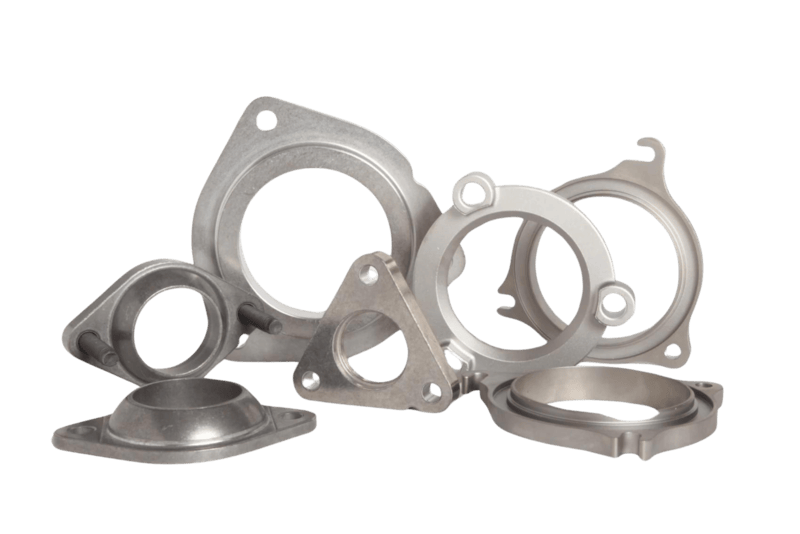
How Exhaust Flanges Are Made?
Exhaust flanges can be made by several manufacturing methods, each offering its own trade-off between cost, strength, and design freedom.
CNC Machining
CNC machining directly cuts stainless steel or carbon steel plates into blanks, and then uses CNC milling to open center holes, bolt holes, and chamfers. It is suitable for small batches of customized parts, with the advantages of high precision and fast delivery, but high material waste.
Hot Forging plus Machining
Hot forging plus machining presses a heated slug in a die, trims flash, and finishes the sealing face. It delivers high strength and consistent quality for mass-production, yet demands costly tooling.
Casting
Casting pours molten metal into sand or investment molds to create complex flanges, followed by light machining on sealing lands. Shape freedom is high, but porosity and shrinkage must be controlled.
Powder Metallurgy
Powder metallurgy process compacts alloy powder in a die, sinters it into a near-final shape.
It’s efficient with material and offers good consistency between production batches, so it suits high-volume production. However, the strength is usually lower than forged parts.
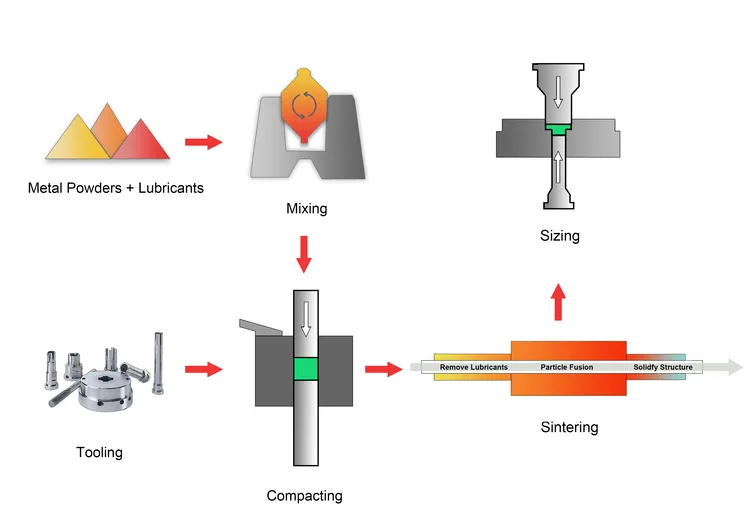
Exhaust Flanges: Common Problems and Challenges
Like any mechanical part, flanges can deteriorate or fail. Here are the most common issues:
Rust and Corrosion
This is a very common enemy of the exhaust system, especially during the rainy season, and in areas with road salt or moisture.
Bolt Fatigue
Improper bolting procedures can cause uneven fastening of the bolts, leaving some loose and others tighter. This can compromise bolt performance and also lead to gasket leaks.
Gasket Leaks
Heat, vibration, poor installation, or the presence of contaminants on the surface leading to uneven compression of the gasket may cause leakages.
Thermal Shock
Rapid fluctuations of high temperature across the flange circumference can lead to flange deformation. Keeping the temperature uniform and engaging the services of an experienced flange supplier to help manage or prevent the situation.
Exhaust Flange Applications
Exhaust flanges are used across a wide range of vehicles and machinery:
Automotive Applications
- Cars and SUVs
- Motorcycles
- Performance builds and race cars
Industrial Applications
- Oil and gas industry
- Water treatment plants
- Industrial plants
- Shipbuilding
In any of these systems, flanges play a vital role in securing exhaust connections and directing gases safely.
FAQ
What Is the Difference Between an Exhaust Flange and an Exhaust Clamp?
Both exhaust flanges and exhaust clamps are used to join exhaust components; however, they differ in many ways:
Connection style: Exhaust flanges are either bolted or welded in the horizontal direction of the pipe, while exhaust clamps are perpendicular to the direction of the pipeline.
Durability: Exhaust flanges are rigid and long-term, while exhaust clamps are flexible and easier to install or remove.
Seal Quality: Exhaust Flanges are stronger and more leak-proof; in contrast, exhaust clamps may loosen over time.
Application: Exhaust flanges are mostly used in systems conveying gas or liquid in high-temperature, high-pressure, low-temperature, and low-pressure environments. They can also be used in harsh conditions with flammables and explosives. Whereas, exhaust clamps are used in systems that control liquid flow and speed under normal temperature and pressure conditions.
How Do I Know If My Exhaust Flange Is Leaking?
The following signs indicate a leakage:
- Engine noise is usually louder than normal.
- Gas smell.
- Reduced fuel economy.
- Loss of acceleration and power.
Can I Weld an Exhaust Flange Permanently?
Yes, welding an exhaust permanently is a sure way to fix a leak, however, it can be expensive and requires some skill and safety precautions. It also requires proper cleaning and preparation of the metal surface.


